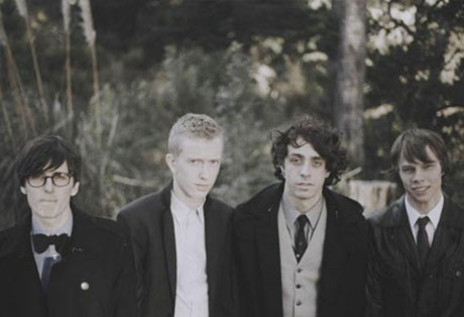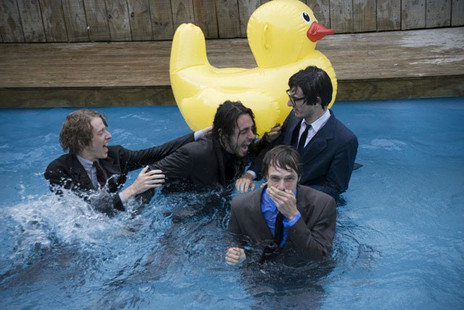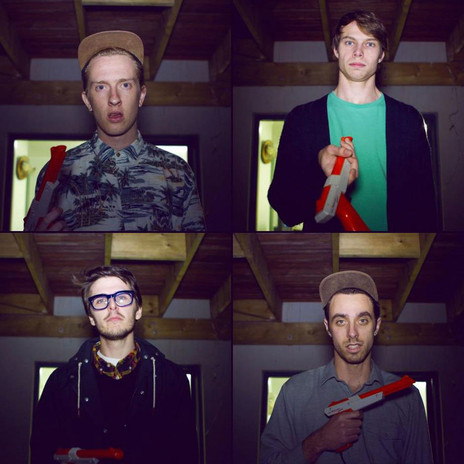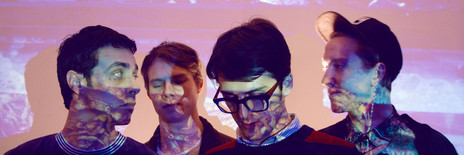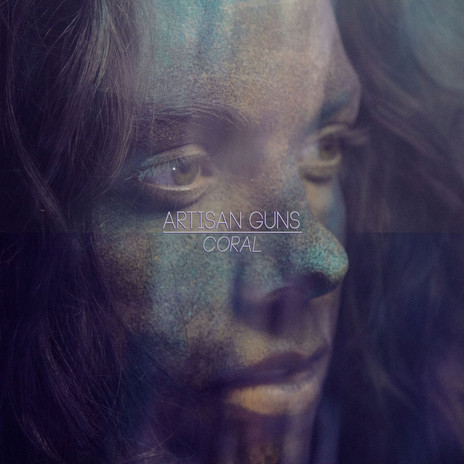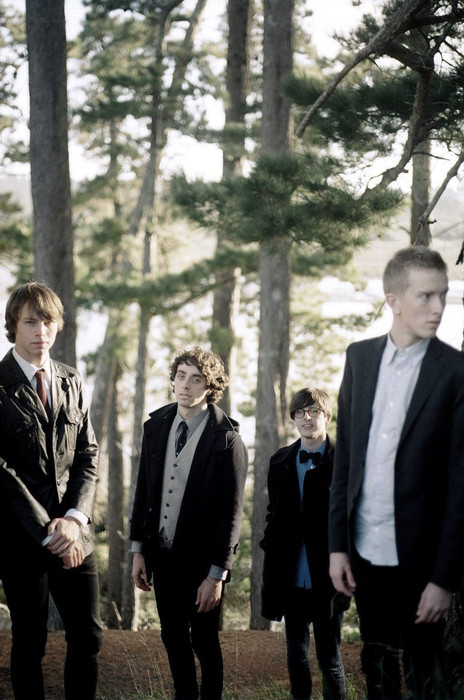“I told Reuben he’d play the drums, then I realised my childhood friend Alex Freer was the best drummer around, so I told Reuben, ‘you can play lead guitar, I’ll teach you’. Then Alex introduced us to Jonathan Pearce who was already a genius guitarist so finally Reuben got moved over to bass.”
Artisan Guns soon moved beyond their alt-country roots.
Artisan Guns soon moved beyond their alt-country roots, though Young's voice retained a plaintive lilt and was complemented by the fine close harmonies provided by Stephens.
Their first EP, Bird and Bone (2009), was released by EMI and spawned the single, 'Autumn' which was play listed on Triple J in Australia and went on to be nominated for a Silver Scroll Award. The song displayed both the band's folky roots and Pearce's soundscape guitar work. Drum machines were mixed in with live drums and Freer toyed with some odd rhythmic patterns such as the busy rim-hits scattered through 'Goodbye'. It made sense that their music would push against convention since three of the band’s members were studying music at university: Hope studied popular music, while Freer and Pearce studied jazz.
Their next EP, Hearts (2010), was even more self-assured and the band continued to mix solid songwriting with some unusual musical choices. Auto-Tune was used to warp Hope's voice in the outro of 'The End', possibly an early sign of where his musical aspirations would eventually head.
Both of these early EPs were recorded by Dave Parker – the first using his friendly home setup at Little Monster Studios; the second at Dave Dobbyn's recording and practice space (affectionately known by some as “Dobworld”), which the band could only use between 6pm-4am due to sound restrictions, a schedule that drove them a little crazy by the end. Parker gave their recordings a sense of warmth and atmosphere (Parker is also known for his work with award-winning folk act, Great North). However, Artisan Guns wanted to push themselves into new territory for their debut album and instead decided to set up with Djeisan Suskov at Revolver Studios, where they had a huge range of options when it came to production approaches.
When a band is successful early on, it can throw up some hurdles when it comes to deciding on what direction to move in next, which often leads to a painful recording process on their “difficult second album”. But in this case, the first two EPs had been so successful that it was the band’s first album that turned into a Herculean feat of endurance. Many of the songs went through multiple versions and Hope revised the lyrics endlessly, trying to catch on the perfect turn of phrase. This process went on for a 18 months before the band finally re-emerged with Coral (2012).
No surprise then that the album sounded a little overworked in places, but Coral’s best moments managed to crystallise the band’s sound into taut, yet expansive musical pieces. The first single, ‘Pulled You In’, begins with Hope’s emotive vocals over a propulsive drumbeat, underpinned by waves of guitar and airy backing vocals. But by the end, the band falls into a groove and winds out the song like they’re covering some unknown B-side by The Clean (who were later named as an influence on this track). The song also introduced the main theme of the album, which revolved around stories of childhood and growing up, and Stephens created a music video to match – two teenage boys living in an endless suburban tract, taking meaning from cars, console games, and collectables. This theme was kept up on the follow-up music video for ‘Heights’ (by Hope and Stephens), which hazily drifted through a suburban party, with the song’s lyrics recalling an incident of a girl falling and being injured (a scene which seems to have taken a mythical weight for the acrophobic narrator).
It turned out to be fitting that the album’s subject matter was about the process of growing up and changing, since the album ended up being more a marker of what the band had been, rather than the work they hoped would push them into the future.
The first few singles for the album were released and then the band abruptly went quiet, as Freer recalls:
“After a short album release tour, we took a break from playing and rehearsing. A meeting was called a couple of months later to discuss the future of the band and how we wanted to proceed. The first album process had been a pretty lengthy and taxing experience on us all in a lot of ways, and that day there were differing opinions on whether we wanted to continue or not, but ultimately we were friends and for the sake of our relationships we decided to call it a day.”
Pearce and Stephens were already playing in the live version of Watercolours (Stephens also made music videos for this project) and both continued to be involved until the songwriter/ music producer behind that act reverted to her own name, Chelsea Jade. Pearce went on to join a number of bands, including – playing keyboards in working big band Sal Valentine and the Babyshakes, playing guitar and keyboards in The Beths and touring internationally as guitarist-keyboardist with Princess Chelsea.
If this wasn’t enough, Pearce also co-produced Anthonie Tonnon’s Successor (2015) and played guitar on the recording. Freer was equally busy, running through too many bands to name, before becoming a regular member of Tiny Ruins. Meanwhile, Hope made an abrupt cut from his past work and reinvented himself as Matthew Young – anonymously releasing shadowy R&B tracks, then breaking out with a piece on the i-D website.
In the end, it turned out that the potential of the young musicians who’d formed Artisan Guns had been realised after all, but only after the band itself had been left far behind.
